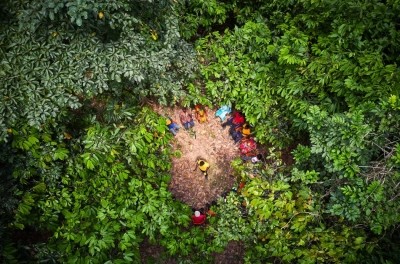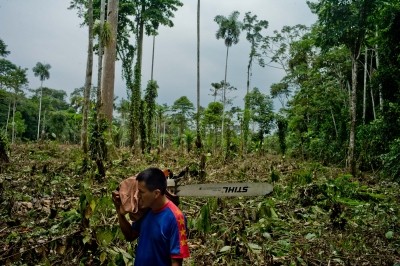Indirect cocoa supply chain challenges the effectiveness of EUDR

On 5th June, the Retailer Cocoa Collaboration (RCC) released its latest trader assessment results, bringing to light the lack of sustainability progress and ethical efforts. The report highlights that while the incoming EU Deforestation Regulation (EUDR) is spurring traceability efforts in the cocoa supply chain, simultaneous failings exist in tackling poverty and child labour within the sector particularly the indirect supply chain.
Cocoa prices have soared to unprecedented levels, affecting markets worldwide. Surging costs driven by poor harvests in key producing regions and limited advancements put the global cocoa market in a precarious position.
“While the hope is that these increased market prices will eventually flow down to cocoa farmers, there is a risk that progress on addressing environmental and social issues could be stalled or even reversed as traders scramble for high-quality supply,” says Holly Cooper, author of the report.
In response to these findings, non-governmental organisations Mighty Earth and the VOICE Network emphasise the need to urgently tackle “critical” issues and implement a threshold for minimum expected performance. The indirect supply chain is at the centre of many of these problems. The NGOs identified that 12 of the 17 critical issues that all traders had failed to respond to relate to indirect supply chain needs.
Better cocoa traceability, but is it trustworthy?
The upcoming EUDR is driving cocoa traceability improvements. The average proportion of a trader’s direct cocoa supply traceable to a farm reached 71% in 2023, an increase of 19 percentage points from 52% in 2022. Furthermore, a third of the traders who took part in RCC’s questionnaire reported “near-full traceability of their direct supply chain,” the RCC said.
“There has definitely been significant progress on traceability in direct supply, which is projected to increase further into 2024,” Cooper says.
The EUDR in brief
- Operators dealing with cocoa and other commodities such as coffee, cattle, oil, palm, rubber, soy, and wood must provide sufficient evidence of non-deforestation in the crops where their products are sourced from as far back as December 31st, 2020.
- Products that do not meet the new due diligence requirements are prohibited from commercialization in the EU market after 30 December 2024.
However, while RCC’s report finds some improvements in supply chain traceability, this is only the case in direct supply chains. While positive, “it’s a different story when it comes to cocoa from indirect sources,” she says.
Indirect supply chains are “risk hotspots for environmental and human rights issues”, the report confirms. Indirect activity within cocoa supply chains sees traders avoid buying the chocolate ingredient directly from the cocoa farmer. Instead, they get it from another source.
As most sustainable commitments and environmental actions relate to direct trading efforts, indirect trading falls under the radar and risks compromising most of the trader’s supply chain. Human rights abuses and deforestation may therefore exist in a significant number of cocoa supply chains, the report states.
No trader achieved near-full traceability to farm in 2022. Just a year later, in 2023, three traders reported more than 95% of the direct supply chain being traceable to cocoa farms. However, there is still a significant gap in traceability in the indirect supply chain.
In 2023, the average proportion of a trader’s indirect cocoa supply traceable to a farm was 22%. While this is up 13 percentage points from 9% in 2022, more needs to be done. “This lack of traceability means the sector has significant blind spots in its ability to understand and address sustainability risks in the cocoa supply chain,” Cooper says.

Sustainable and ethical efforts stall
The report finds that cocoa-related deforestation progress is not as widespread as zero deforestation commitment and policies may first indicate. While these are intact for most traders, they are mostly limited in scope to certain geographical areas and may exclude land conversion from their targets. Calls for traders to show that cocoa is deforestation- or conversion-free for more than 75% of volumes is a vital issue that demands action.
Critical human rights issues remain part of global cocoa supply chains, including the failure to remove child labour and pay farmers a living wage. “Child labour issues are not being sufficiently identified, remediated or prevented,” the report states.
Child Labour Monitoring and Remediation Systems (CLMRS) is a crucial tool available to traders to combat child labour. However, the RCC report found that only five traders who were questioned reported data on using CLMRS. None of these traders said they had used CLMRS within their indirect supply chains. As such, this raises “a very significant risk of child labour occurring,” the RCC said.
Poverty and lack of living income remain significant problems in the cocoa sector. Three traders reported that just 10% or fewer received a living wage. The two best-performing traders have just over 50% of their direct supply farmers receiving a living income. The stats within the indirect supply chain were worse still. Only one trader reported providing living wages to farmers in their indirect supply chain, but this was the case for only 51% of farmers.
Cocoa is not ready for deforestation laws
The failure to act on sustainability initiatives in the indirect supply chain puts the effectiveness of the forthcoming EUDR in question. “Traders source as much as 97% of their cocoa indirectly, so overall, the sector is not yet ready for the EUDR,” Cooper says.
Despite legislation strengthening supply chain transparency and accountability, actions are less robust than the cocoa industry requires. “There remains a lack of policies and commitments covering indirect supply, which means a significant portion of cocoa on the EU market is high-risk,” Cooper details.
Cocoa’s immediate priorities
The RCC has identified immediate priorities, setting out four key recommendations in the report: “Firstly, traders need to include the indirect supply chain in their sustainability commitments and actions, as this is where the greatest risk of deforestation resides,” Cooper says.
Alongside this, traders need to ensure that their deforestation commitments are adjusted to cover all possible sources and relevant causes of deforestation while incorporating restrictions on land conversion.
The third key priority is addressing and reporting on progress in eliminating child labour in supply chains. “Finally, it’s imperative that traders ensure that all cocoa farmers receive a living income,” Cooper adds.
Retail responsibility
“Retailers are responsible too,” Cooper says. Cocoa production challenges call on industry players to commit to strong sustainability performance and establish environmental and social standards.
“Collaborating on best practices in cocoa supply chain sustainability and bringing together a set of harmonised asks to cocoa traders is the way forward to achieving the ultimate end goal of increasing cocoa sustainability together,” she says.














